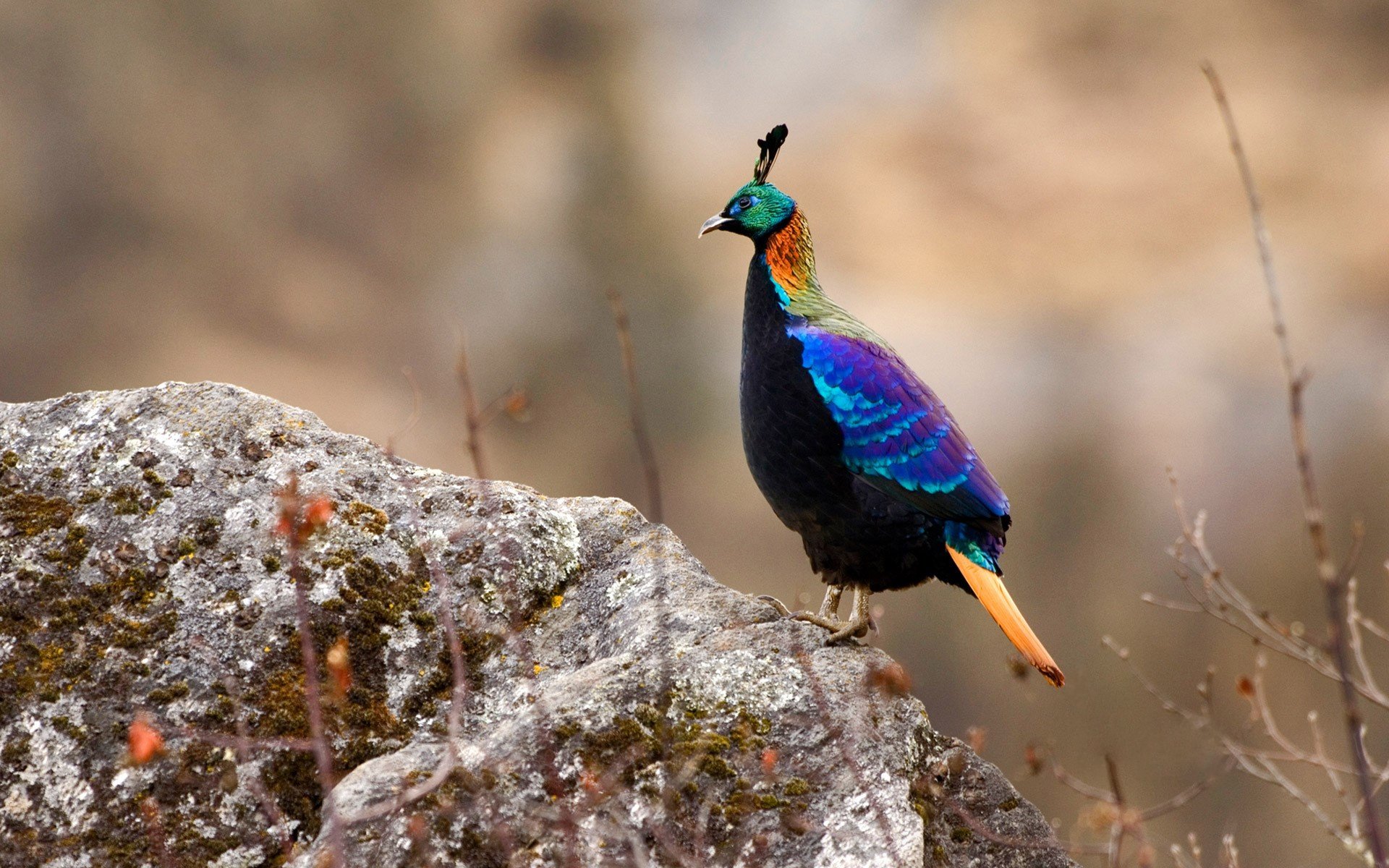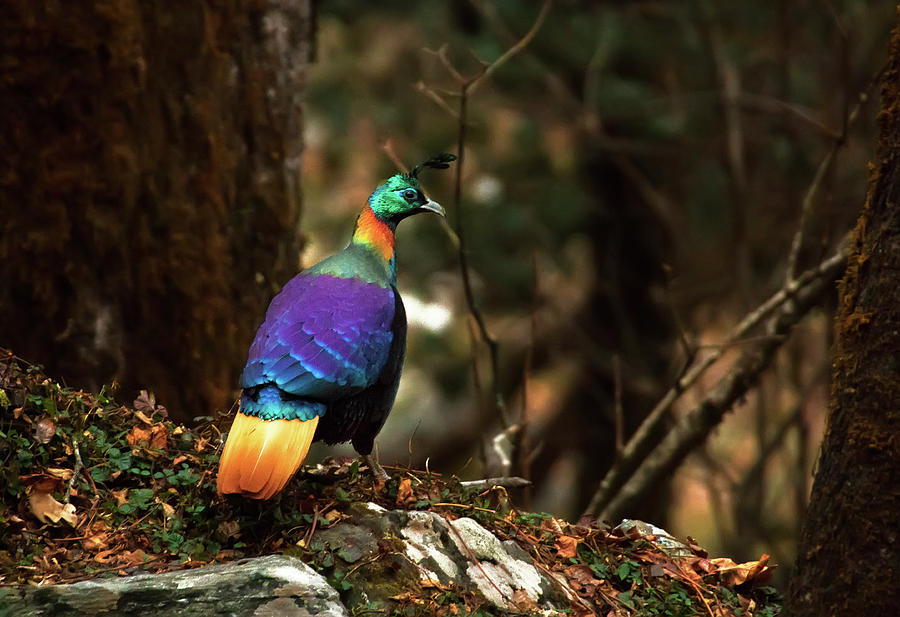

The chicks are not among the easiest to rear but once past a few weeks old tend to be less fragile.

The birds become sexually mature in their second year with the hen laying from 5 to 8 eggs in a clutch and two or three clutches in the season. The breeding season for these birds starts early to mid April. As well as all the roots they love so much they also look for their peanut and seed treats. I'm pleased to say they have devoured a multitude of dockens in their aviaries. They use their very powerful beaks to dig up tubers, roots, insects and grubs etc. They find a great deal of their diet through their incessant digging. The reason for this is their love of digging. We use grassy aviaries measuring 432 square feet to accommodate them and even with this space we use a rotation system to keep them on grass. Monals are very easy birds to care for as long as they have plenty of room. The Monal hen is predominantly brown as is often the case with females but she has a white throat and has, like the male, the most beautiful azure blue colouring around the eye. All of the front from the throat down is black.
#Monal himalayan Patch
He also has a short bright tan brown tail and a white patch on the rump. He has a shimmering crest with the same metallic properties. It consists mainly of metallic colours including blue, green, red and purple. The Himalayan Monal is a large heavily built bird, the male of which has spectacular plumage. They are also indigenous to areas in Eastern Afghanistan, Pakistan and further east to Tibet, Bhutan and Myanmar. Their range is widespread and not confined only to the Himalayas. The Himalayan Monal is the national bird of Nepal and as the name suggests inhabits the Himalayan Mountains at high altitudes which can be anything from around 2000m to over 4000m. There are another two species in the Lophophorus genus, namely the Chinese Monal and the even rarer Sclaters Monal. The Himalayan or Impeyan Monal is the only Monal pheasant regularly seen in captivity. Recommended citation for factsheets for more than one species: BirdLife International (2023) IUCN Red List for birds.Himalayan Monal Pheasant (Lophophorus impeyanus) Population size:ĭecreasing Extent of occurrence (breeding/resident):īirdLife International (2023) Species factsheet: Lophophorus impejanus.

For these reasons the species is evaluated as Least Concern. The population size has not been quantified, but it is not believed to approach the thresholds for Vulnerable under the population size criterion (10% in ten years or three generations, or with a specified population structure). Justification of Red List category This species has a very large range, and hence does not approach the thresholds for Vulnerable under the range size criterion (Extent of Occurrence 30% decline over ten years or three generations).

Click here for more information about the Red List categories and criteria


 0 kommentar(er)
0 kommentar(er)
